To Issue 133
Citation: Hasegawa H, Suzuki T, “OXYCAPT™: A Superior Primary Container Material for Biologics and Gene and Cell Therapies”. ONdrugDelivery, Issue 133 (May 2022), pp 42–46.
Hiroki Hasegawa and Tomohiro Suzuki provide an overview of the OXYCAPT multilayer vial and syringe, along with a discussion of how OXYCAPT fares at low and very low temperatures.
“The carbon footprint, NOx and SOx emissions and water consumption associated with plastic containers for medical use are several times smaller than those of their glass equivalents.”
In recent years, the pharmaceutical industry has expressed increasing interest in primary containers that can be used at low or very low temperatures. In particular, this interest has come from the desire for containers suitable for biologics and regenerative medicines, such as gene and cell therapies. As these drugs are sensitive to heat, oxygen, UV light and inorganic extractables, amongst other factors, and therefore have to be stored at low or very low temperatures, plastic containers are often regarded as a preferable option to the alternatives. Based on such requests, Mitsubishi Gas Chemical (MGC) has conducted stability tests on its OXYCAPT™ multilayer plastic vial at very low temperatures to ascertain its suitability for this role. OXYCAPT consists of three layers – the drug contact layer and the outer layer are made of COP, and the oxygen barrier layer is made of MGC’s novel polyester (Figure 1).
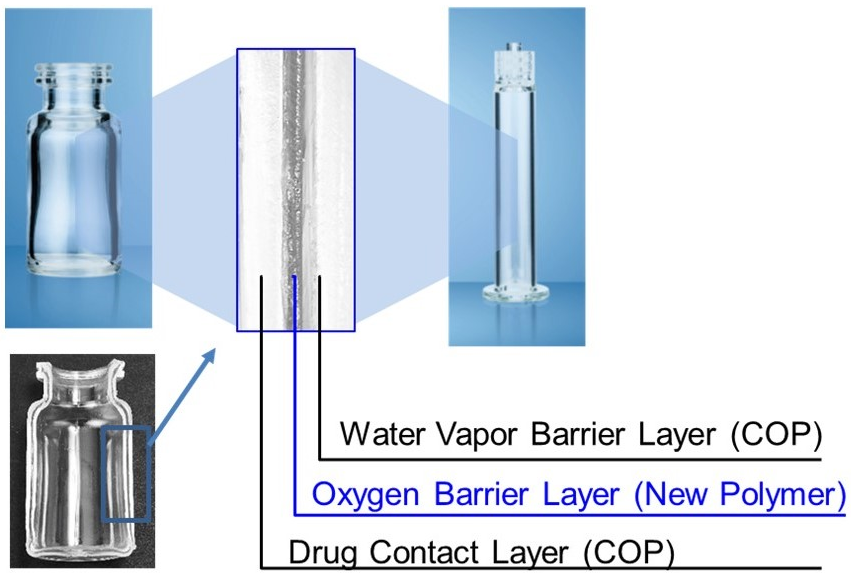
Figure 1: Multilayer structure of OXYCAPT.
OXYCAPT offers many advantageous properties, including:
- Excellent oxygen and ultraviolet (UV) light barrier
- Strong water vapour barrier
- Very low extractables
- High pH stability
- Low protein adsorption and aggregation
- Silicone-oil-free barrel
- High transparency
- High break resistance
- Easy disposability
- Lightweight.
“The carbon footprint, NOx and SOx emissions and water consumption associated with plastic containers for medical use are several times smaller than those of their glass equivalents.”
MGC recently obtained a report on the environmental impact of glass and plastic containers for medical use from a Japanese research company. The report shows that plastic containers for medical use are much more environmentally friendly compared with glass containers. For example, the carbon footprint, NOx and SOx emissions and water consumption associated with plastic containers for medical use are several times smaller than those of their glass equivalents.
PROPERTIES OF OXYCAPT VIAL AND SYRINGE
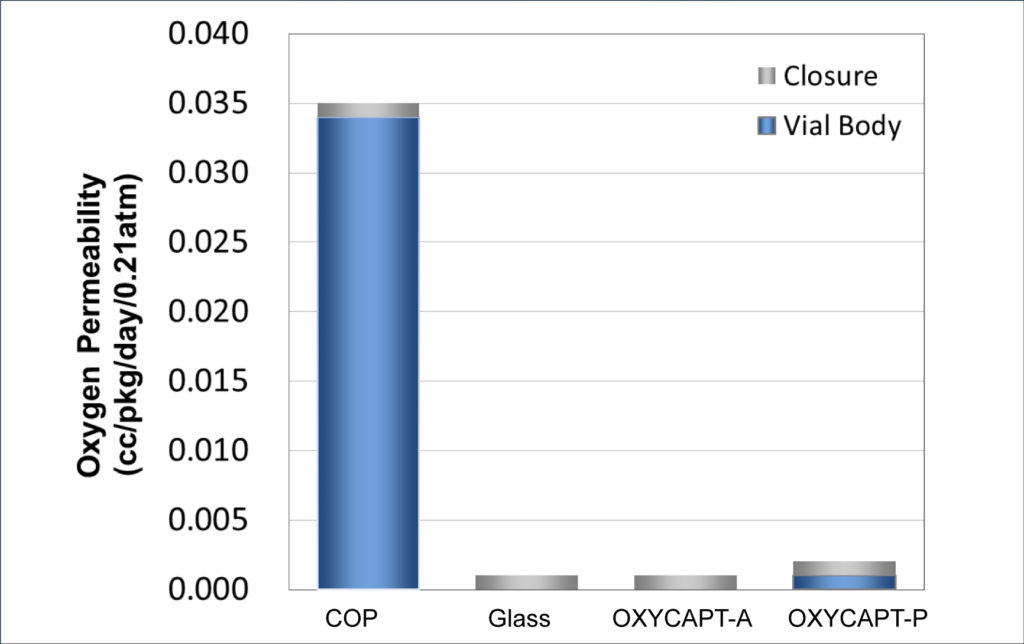
Figure 2: Oxygen permeability comparison of a typical COP, glass, OXYCAPT-A and OXYCAPT-P.
There are two types of OXYCAPT multilayer plastic vial and syringe – OXYCAPT-A and OXYCAPT-P. OXYCAPT-A offers a glass-like oxygen barrier. According to internal studies, thanks to its oxygen-absorbing function, OXYCAPT-A can maintain lower oxygen concentrations in the headspace than Type 1 glass. OXYCAPT-P also provides an excellent oxygen barrier, although there is no oxygen-absorbing function. For example, the oxygen barrier of an OXYCAPT-P vial is about 20 times better than that of a COP monolayer vial (Figure 2).
OXYCAPT also provides an excellent UV barrier. While about 70% of 300 nm UV light transmits through glass and COP, only 1.7% transmits through OXYCAPT (Figure 3). MGC has confirmed that this feature contributes to the stability of biologics.
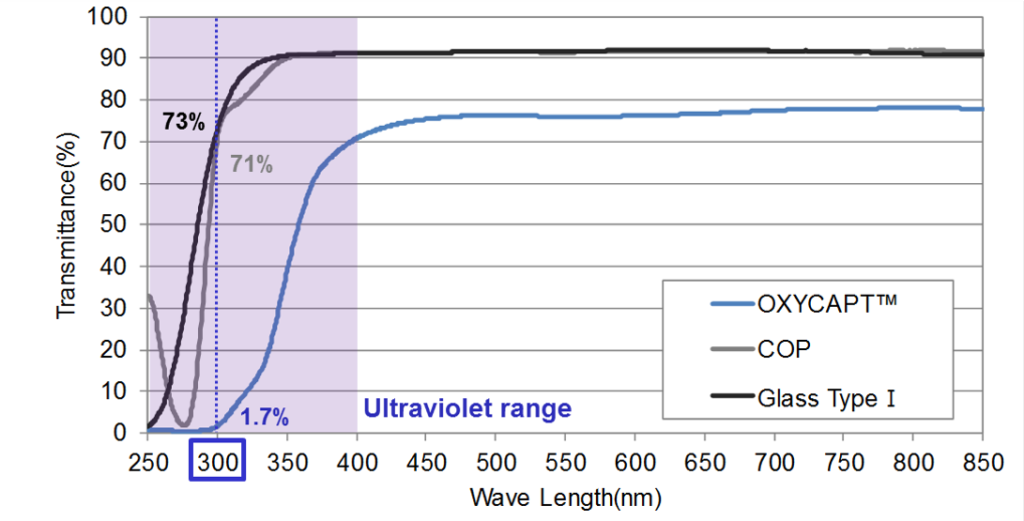
Figure 3: UV light transmittance comparison of a typical COP, Type 1 glass and OXYCAPT.
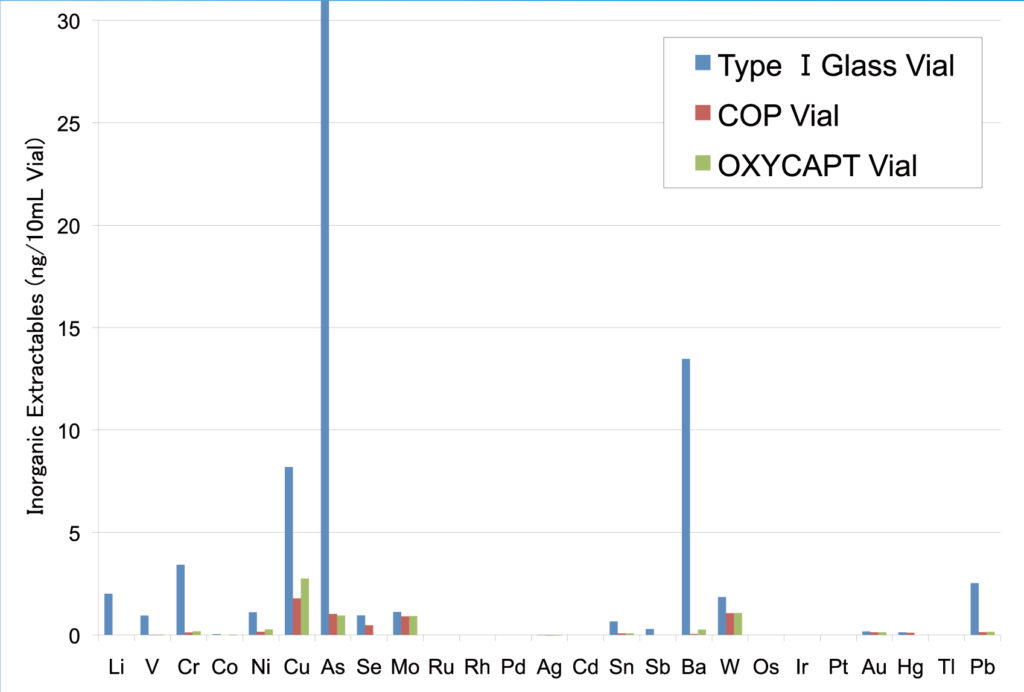
Figure 4: Comparison of inorganic extractables found in COP, Type 1 glass and OXYCAPT.
“Although eight of the COP-monolayer vials were broken, no breakage or leakage was detected in any of the OXYCAPT vials.”
While OXYCAPT cannot reach the performance of glass with respect to acting as a water vapour barrier, its properties are similar to those of COP, which has been used for injectable drugs for a long time. This means that OXYCAPT easily meets the requirements of a water vapour barrier set out by the ICH guidelines.
Studies have shown an extremely low level of extractables from OXYCAPT. One study was conducted to confirm the levels of volatile, semi-volatile and non-volatile impurities from OXYCAPT. Water and four solutions (50% ethanol, NaCl, NaOH and H3PO4) were selected and impurities were measured by gas chromatography mass spectrometry (GC-MS) and liquid chromatography-UV spectroscopy-mass spectrometry (LC-UV-MS) after 70 days at 40°C. Compared with the control, impurities were not detected in the OXYCAPT containers. A second study confirmed that inorganic extractables levels from OXYCAPT were similar to those from COP, which is well known for being an extremely pure polymer with a better extractables profile than Type 1 glass (Figure 4). Lower levels of inorganic extractables are known to contribute to better pH stability in drug products.
The OXYCAPT vial and syringe are produced by co-injection moulding technology. Although this technology has been used in the production of beverage bottles for many years, MGC is the first company to succeed in applying it to the production of multilayer plastic syringes. MGC has also developed inspection methods for testing the oxygen barrier layer. All of the containers are fully inspected by state-of-the-art inspection machinery.
| Type | Volume | ISO | Parts | Option |
| Vial | 2 mL | ISO 8362-1 | Vial | Bulk or RTU |
| 6 mL | ISO 8362-1 | Vial | Bulk or RTU | |
| 10 mL | ISO 8362-1 | Vial | Bulk or RTU | |
| 20 mL | ISO 8362-1 | Vial | Bulk or RTU | |
| Syringe | 1 mL long | ISO 11040-6 | Barrel, Tip Cap, Stopper, Plunger Rod |
RTU |
| 2.25 mL | ISO 11040-6 | Barrel, Tip Cap, Stopper, Plunger Rod |
RTU |
Table 1: MGC’s OXYCAPT product portfolio.
MGC can offer bulk vials and ready-to-use (RTU) vials and syringes, with its RTU products provided in standard nest and tub formats (Figure 5). The nest and tub are mainly sterilised using gamma rays. There are 2, 6, 10 and 20 mL variants for vials, and 1 mL long and 2.25 mL variants for syringes (Table 1). MGC is willing to provide samples for initial testing free of charge.
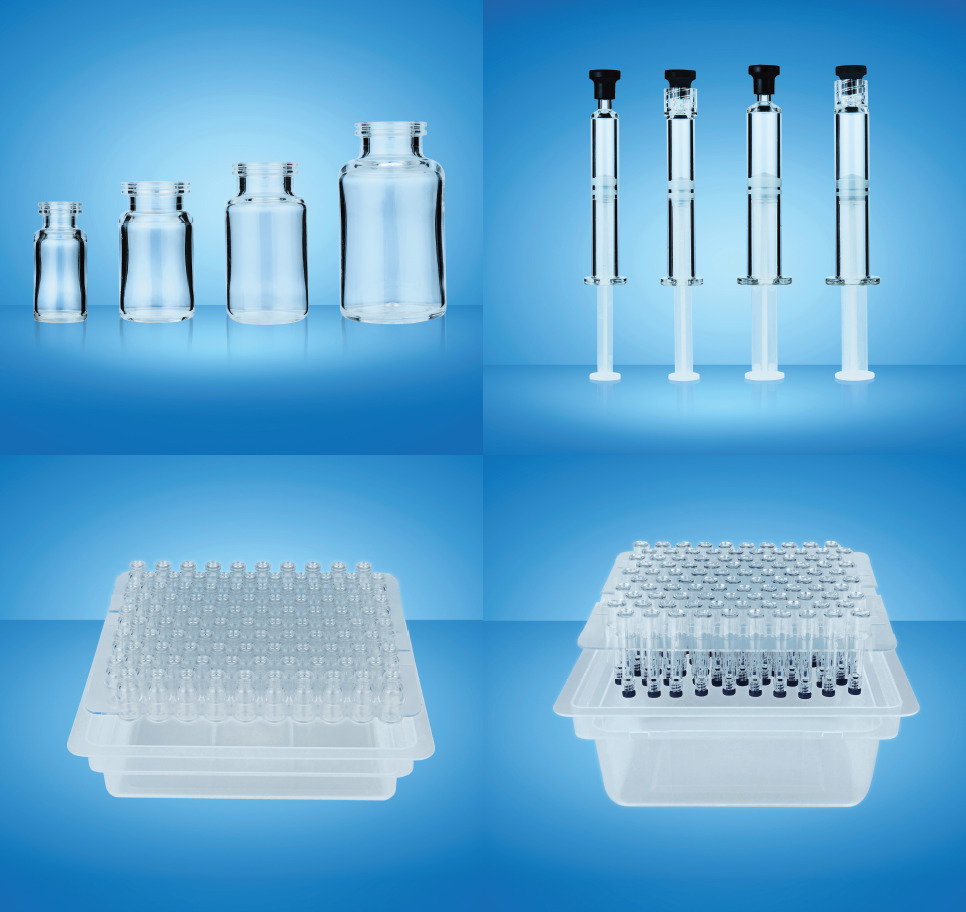
Figure 5: OXYCAPT multilayer plastic vial and syringe is available in standard nest and tub formats.
“These latest results have contributed to the ongoing studies verifying OXYCAPT’s superior properties for biologics and regenerative medicines.”
Each polymer meets the requirements of US Pharmacopeia (USP) regulations USP<661>, USP<87> and USP<88>, as well as those of the European Pharmacopeia, and has been filed in the US FDA’s drug master file (DMF). The vials and syringes are also compliant with each pharmacopoeia and have been filed in the DMF. The syringes are produced and controlled in accordance with ISO 13485.
The primary target market for OXCAPT is the therapeutic application of biologics. As mentioned in ICH Q5C (Stability of Biotechnological/Biological Products), oxidation is one of the causes of protein instability. As such, the oxygen and UV barrier properties of OXYCAPT will definitely contribute to the stability of biologics stored within. Additionally, MGC believes that OXYCAPT is well suited to emergency adrenaline, which is well known as an oxygen-sensitive drug, because OXYCAPT combines both an oxygen barrier equivalent to Type 1 glass and the breakage resistance of a polymer. Furthermore, some drug developers have recently started evaluating the OXYCAPT vials for their gene and cell therapies; the RTU vial is sterilised by gamma radiation, making it ideal for protein-based drugs.
OXYCAPT AT VERY LOW TEMPERATURES
In order to verify the suitability of OXYCAPT™ for drugs stored at very low temperatures, MGC carried out studies using OXYCAPT vials. As customers often ask about the durability of OXYCAPT at low temperatures, MGC conducted quick defrosting and dropping tests. Firstly, the vials were stored in a freezer at -80°C for one day. After being removed from the freezer, the frozen vials were immediately dipped into hot water (40°C) for 15 minutes. No breakage, leakage or layer separation was detected in any of the vials (Figure 6).

Figure 6: No breakage, leakage or layer separation was found after the quick defrosting test (-80°C to 40°C).
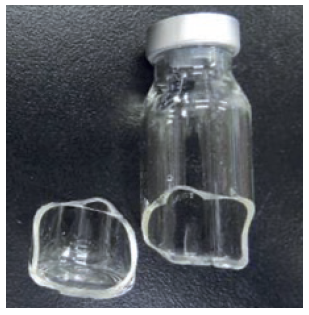
Figure 7: Broken COP vial after drop test following storage at -180°C.
A further test was conducted where the vials were stored in a freezer at -80°C for one-week, six-month and 24-month periods. After being removed from the freezer, the vials were immediately dropped onto a steel plate from a height of 150 cm. No breakage, leakage or layer separation was detected in any of the vials for any length of time in cold storage.
| OXYCAPT Vial | COP Monolayer Vial | |
| Breakage | 0/20 | 8/20 |
| Leakage* | 0/20 | 8/20 |
* Dropped vials were stored at room temperature until the frozen water was defrosted and then leakage was observed.
Table 2: Breakage and leakage from COP and OXYCAPT vials stored at -180°C.
Finally, the same dropping test was conducted using OXYCAPT and COP monolayer vials that had been stored at approximately -180°C, as regenerative medicines such as gene and cell therapies are often preserved in liquid nitrogen gas phase freezers. After being removed from the liquid nitrogen gas phase freezer, the vials were immediately dropped to a steel plate from a height of 150 cm. Although eight of the COP-monolayer vials were broken (Figure 7), no breakage or leakage was detected in any of the OXYCAPT vials (Table 2). For clarification, as it was considered obvious that glass vials would shatter as a result of these tests and present a safety risk to the experimenters, glass was excluded from the test.

Figure 8: Procedure for the leak test.
In addition to the durability tests, MGC carried out a leak test, as some customers have expressed concern about leakage of liquid due to the vial and rubber stopper shrinking at ultra-low temperatures. OXYCAPT vials with 10 mL water, 0.1% polysorbate 80 and 0.05 % toluidine blue were stored sideways at -180°C for one month and then stored at 23°C for one week. After the cap and rubber stopper were detached from the vial, leakage of liquid between the lip of the vial and the rubber stopper was observed by the naked eye (Figure 8). As no leakage was detected for any of the vials (Figure 9), MGC concluded that the OXYCAPT vial can be used to store drugs in liquid nitrogen gas phase conditions. Furthermore, since it is well established that the shrink rate between thermoplastic material and rubber is smaller than that between glass and rubber, MGC is planning to conduct additional container closure integrity tests using the oxygen-ingress method at very low temperatures.

Figure 9: Examination of OXYCAPT vial after storage at -180°C.
In conclusion, these latest results have contributed to the ongoing studies verifying OXYCAPT’s superior properties for biologics and regenerative medicines. In addition to the advantages of COP, such as a strong water vapour barrier, high break resistance, very low extractables and low protein adsorption, OXYCAPT also provides a strong oxygen and UV light barrier. MGC believes that OXYCAPT offers a multitude of benefits to the rapidly growing field of biologics and gene and cell therapies.

